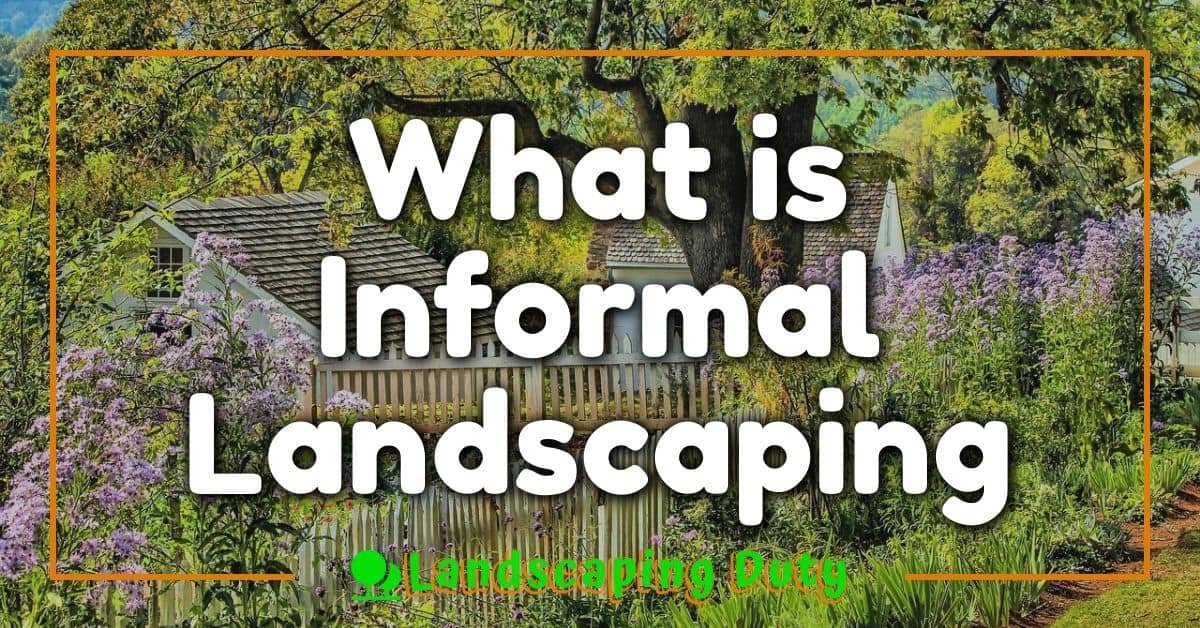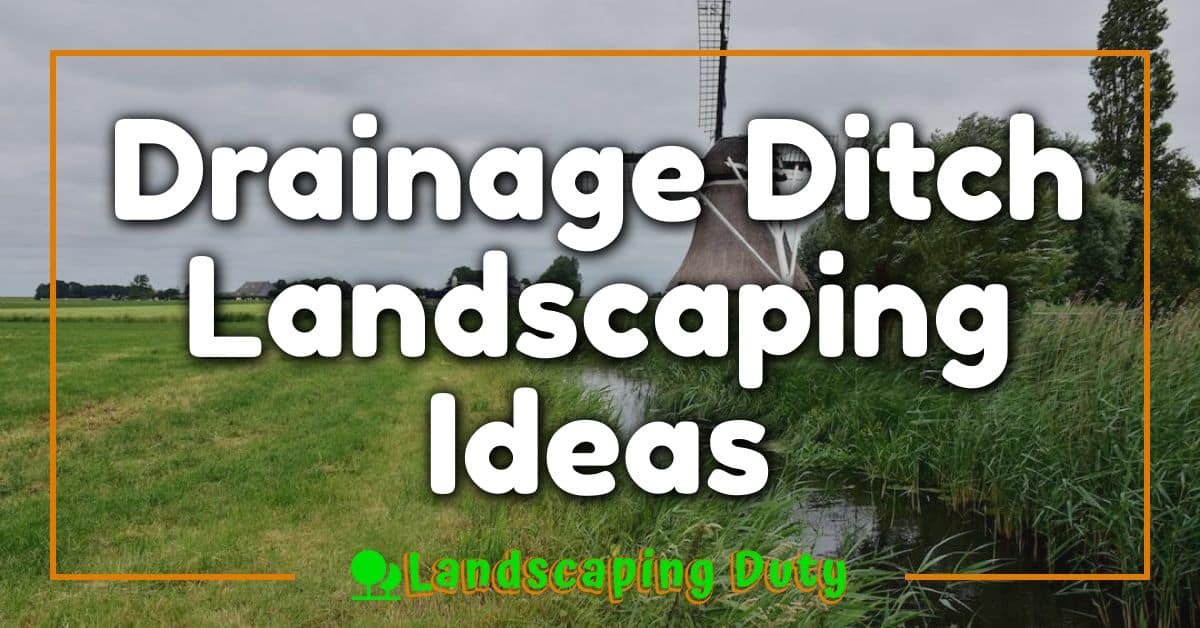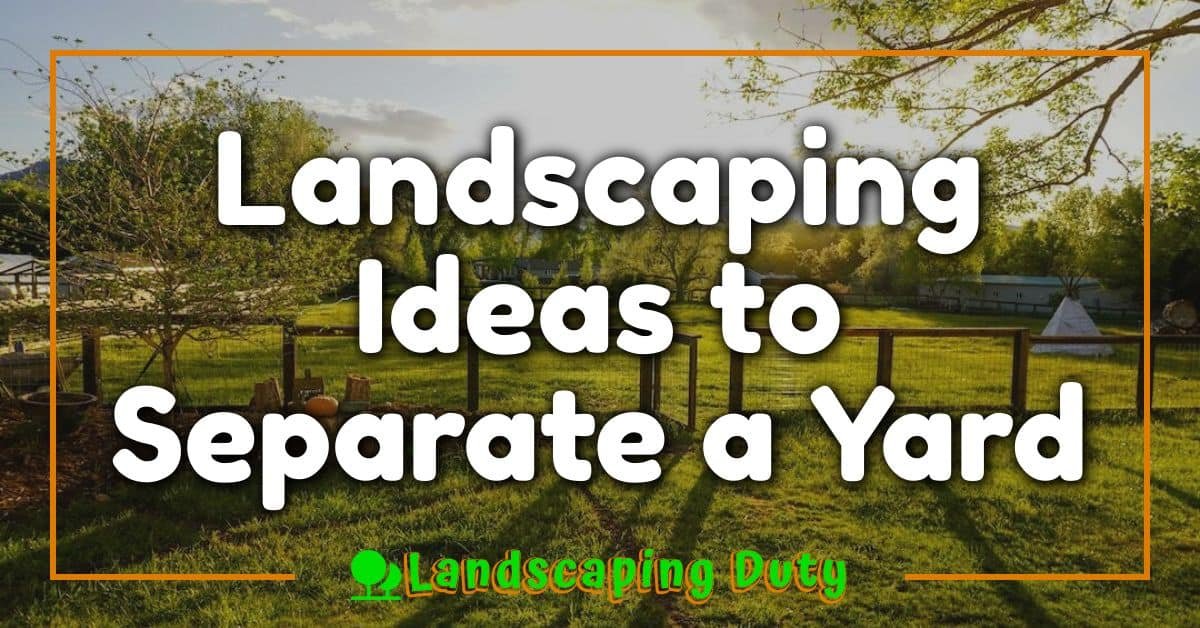Informal landscaping is a unique approach to landscape design that emphasizes a more natural, organic appearance, showcasing curves and loose lines that blend well with the surrounding environment. Unlike formal landscape designs that rely on strict patterns and symmetries, informal landscaping allows plants to grow naturally, creating an effortless yet visually stunning outdoor space.
Understanding the elements of informal landscaping is essential in order to achieve a harmonious balance between the built environment and existing natural features. By taking into account the lay of the land, features like streams or trees, and the desired effect homeowners want for their outdoor space, a well-designed informal landscape can provide both function and beauty.
Incorporating different types of informal gardens and ideas for various spaces, as well as exploring the design processes and strategies for maintaining an informal garden, will help homeowners discover the endless options available for creating their perfect outdoor oasis.
Key Takeaways
- Informal landscaping focuses on a natural, organic appearance and adapts to the surroundings.
- Understanding key elements and types of informal gardens helps create visually stunning outdoor spaces.
- Proper design processes and maintenance strategies ensure long-lasting beauty in informal landscapes.
Understanding Informal Landscaping
Defining Informal Landscaping

Informal landscape design is a style that emphasizes a more natural and relaxed appearance. This approach allows plants to grow freely and instead of rigidly conforming to a strict layout. As a result, an informal landscape often closely resembles the natural environment, with flowing lines and curved pathways that harmoniously blend with the surroundings. In essence, it’s all about embracing the beauty of nature and creating a stress-free space where you can unwind and enjoy your outdoor area.
Difference Between Informal and Formal Landscaping
While both informal and formal landscape designs aim to create aesthetically pleasing outdoor environments, they significantly differ in their approach and visual outcome. Formal landscape design is characterized by its structured layout, often featuring geometric shapes, straight lines, and well-manicured plants. Pruned hedges, symmetrical arrangements, and evenly spaced plants are typical features of formal landscapes.
On the other hand, informal landscaping opts for a more natural look, which makes it appear less structured. The foundation of an informal landscape lies in embracing its informality, allowing plants to grow without much manipulation, and designing the space with curves and irregular shapes that yield a sense of spontaneity.
Key differences between informal and formal landscaping include:
- Natural Look: Informal landscapes prioritize a natural appearance, while formal ones aim for a more structured and planned aesthetic.
- Organization: Informal landscaping often features loose and free-flowing arrangements, while formal landscapes rely on geometric patterns and structured layouts.
- Plant Growth: In informal landscapes, plants are allowed to grow more naturally, whereas formal landscapes require regular pruning and maintenance to retain their defined shapes.
In conclusion, when designing your outdoor space, consider if you want a more relaxed and nature-inspired environment or one that showcases a sense of order and elegant structure. By understanding the distinctions between informal and formal landscape designs, you’ll be better equipped to nourish a garden that mirrors your personal style and complements the characteristics of your property.
Elements of Informal Landscaping
Informal landscaping provides a more relaxed, natural, and free-flowing atmosphere for your garden. In this section, we’ll discuss some key elements that make up informal landscaping, focusing on floral arrangements, shrubs and trees, and hard landscaping elements.
Floral Arrangements
When selecting plants for your informal garden, think about incorporating a variety of textures, colors, and shapes to create a visually interesting area. You should choose plants that thrive in your climate and complement each other. Instead of planting in rigid rows, consider arranging plants in clusters or drifts, which creates a more relaxed and even whimsical feel. Mixing different heights and types of plants also adds to the informal atmosphere.
Shrubs and Trees
Shrubs and trees play a crucial role in informal landscaping. Like your floral arrangements, aim for a diverse selection of foliage, textures, and colors to add visual interest.
For shrubs, try incorporating both deciduous and evergreen varieties. This way, you’ll have year-round interest and structure in your garden. When it comes to trees, opt for species with interesting shapes and growth habits. Trees with picturesque or unique branching patterns, such as Japanese maples or weeping cherries, can serve as eye-catching focal points in your informal landscape.
Hard Landscaping Elements
Hard landscaping elements refer to non-living features, such as pathways, patios, and ornaments. In an informal setting, natural materials like wood, stone, or gravel work well for these elements. Consider using meandering pathways made from stepping stones or crushed granite instead of straight lines and rigid, geometric shapes.
Incorporate informal seating, like benches made of natural materials, to create a cozy spot for relaxation. Ornaments, like birdbaths or sculptures, can enhance your garden’s aesthetic if used sparingly and in harmony with the surrounding plants and materials.
Throughout the process of creating your informal landscape, remember to keep a friendly and relaxed tone, allowing yourself the freedom to experiment with different elements that suit your personal taste and style. Enjoy the journey of crafting your unique, informal garden sanctuary.
The Design Process
Planning and Ordering
When designing an informal landscape, you should start by conducting a site inventory and analysis. This helps you determine what elements will work best for your garden. It’s important to create a list of your needs and preferences. Once you have a clear vision of what you want and how it will fit into your space, you can begin to map out the functional diagrams and conceptual design plans [(source)).
Informal landscape design often follows the natural terrain of your space, incorporating curves and organic shapes to create a flowing and harmonious appearance [(source)).
Balance, Scale, and Proportion
Balance in informal landscaping can be achieved through the careful arrangement of plants and other elements. Strive for a sense of harmony between your design elements while embracing a more relaxed and natural layout, which can still include radial or bilateral symmetry if desired [(source)).
Consider scale and proportion when planning your landscape. Even in an informal design, it’s essential to ensure that the size of your plants and other elements are visually appropriate for your space. This means thinking about how your plants will grow over time, and how they will complement each other when they reach their full size.
Creating a Focal Point
In an informal landscape, creating a focal point can add visual interest to your garden. This focal point can be anything from a striking tree, a garden sculpture, to a water feature. When designing your informal landscape, think about the journey that visitors will experience as they move through your space. Integrate intriguing and eye-catching elements that encourage exploration and create a sense of depth in your garden [(source)).
Types of Informal Gardens
Mixed Borders
Mixed borders are a fantastic way for you to create an informal garden. In this style, you combine different types of plants, such as perennials, shrubs, and trees, to create a diverse and harmonious landscape. Mixed borders can be particularly attractive because they offer a variety of textures, heights, and colors throughout the year. You can easily experiment with different plant combinations and let your creativity shine.
Cottage Gardens
Cottage gardens are another popular type of informal garden. These charming spaces are characterized by their abundance of flowers and lush greenery. In a cottage garden, plants are generally allowed to grow and spread freely, giving the impression of “controlled chaos.” This style is perfect if you love the blend of formal and informal elements, with gentle curves and meandering paths. To create a successful cottage garden, choose plants that bloom at different times throughout the season, so there’s always something eye-catching.
Asymmetrical Gardens
Asymmetrical gardens break away from the typical symmetrical design found in formal gardens. Instead, these gardens focus on creating an organic and natural feel through the use of irregular shapes, lines, and patterns. By embracing asymmetry, you can create a more relaxed and inviting atmosphere in your outdoor space. One way to achieve this is by incorporating meandering paths, flowing water features, and a variety of plant species. Embrace the imperfections and watch your garden become a stunning, unique oasis.
« What is Japanese Landscaping? A Quick Guide to Serene Design What is Formal Landscaping? A Quick and Friendly Guide »
Maintaining an Informal Garden
Weeding and Maintenance
A friendly reminder to keep your informal garden in check is regular weeding and maintenance. Even though it embraces a more natural style, you still need to manage weeds to prevent them from overtaking your plants. Create a routine to check for weeds and remove them as soon as you spot any, maintaining a balance between desired plants and unwanted guests.
While informal gardens might seem low-maintenance, some care is still required. For instance, it’s essential to trim plants when necessary and provide support for climbing plants. Make sure to keep an eye on any overgrowth and address it as needed. Remember, the idea is to keep a relaxed yet tidy appearance without an overly-manicured feel.
Covering the Lawn
When it comes to the lawn area in your informal garden, there are several options to reduce maintenance while enhancing the natural look. One popular choice is to use ground-covering plants such as moss, creeping thyme, or clover, which can create a lush green carpet without the need for constant mowing.
Another way to minimize lawn maintenance is to add organic matter like compost or mulch. This improves soil fertility and reduces weed growth, giving your plants the best possible environment to thrive in.
Remember, maintaining an informal garden is all about finding the balance between its natural feel and proper care. Keep up with regular weeding, trimming, and lawn coverage, and you’ll be able to enjoy your informal garden’s uniquely relaxed charm.
Informal Landscaping Ideas for Different Spaces
When planning your informal landscaping, you can consider various ideas tailored specifically for different areas of your outdoor space. This approach provides a cohesive and harmonious design that complements the natural surroundings and enhances your home’s appeal.
Front Yard Landscaping
Your front yard is the first impression guests and neighbors get of your home. Embrace the friendly tone of informal landscaping by incorporating free-flowing elements and loosely-structured designs. Here are some ideas you can try:
- Use native plants and shrubs that require less maintenance and create a relaxed, welcoming atmosphere.
- Consider planting flower beds in curved and organic shapes, which follow the contours of your land, in contrast to rigid geometric patterns.
- Incorporate natural materials such as stone and wood for pathways and edging to enhance the informal feel.
Backyard Landscaping
Your backyard is the perfect place to experiment with informal landscaping ideas that cater to your family’s needs and preferences. Here are a few suggestions:
- Create cozy seating areas with natural materials such as wood or stone benches, surrounded by lush greenery or colorful flowering plants.
- Design meandering pathways aligned with plants and flowers leading to different areas of your backyard, inviting exploration and discovery.
- Use a mix of trees, shrubs, and vines to create dynamic visual interest, capture privacy, and encourage local fauna such as birds and butterflies.
Remember, the key to achieving a successful informal landscape is embracing a natural, relaxed, and friendly atmosphere, allowing the beauty of nature to shine through in both your front and backyard spaces.
Final Thoughts
In creating your own informal landscape, the goal is to achieve a natural appearance that feels inviting and comfortable. With the right approach, you can effortlessly incorporate natural elements and materials into your outdoor space, making it a unique haven for you and your guests.
To begin, consider leaning into the curves and features of your land’s topography. By following the natural contours of your property, you can create a sense of harmony and cohesion with the environment. Remember that one of the core principles of informal landscaping is to work with the land, rather than against it. Keeping this in mind will help guide your design choices.
When selecting plants, prioritize native species. This not only serves to foster a more natural appearance overall, but also has the added benefit of supporting your local ecosystem. A variety of plants, shrubs, and trees can be used to create texture and visual interest, while also promoting biodiversity.
As you plan and execute your informal landscape, don’t hesitate to involve professional garden design services. They can provide valuable insights and recommendations to shape your outdoor space into the natural oasis you envision. With their expertise, you can achieve a beautiful, functional, and environmentally friendly garden.
By embracing the principles of informal landscaping and incorporating a natural appearance through careful planning, you can create a garden that feels truly authentic. Trust your instincts and remember to enjoy the journey, as transforming your outdoor space into a calming and inspiring refuge is both a process and an accomplishment. Your hard work will be rewarded with the gift of a truly unique outdoor environment for you to cherish, share, and enjoy for years to come.
Frequently Asked Questions
What are the key features of informal landscaping?
Informal landscaping focuses on creating a natural, free-flowing appearance with loose and billowy plant materials. It often follows the curves of your property boundary, driveway, or other natural landscape elements, resulting in a more relaxed and organic look compared to formal landscaping. With this style, symmetry is achieved by allowing plants to grow naturally rather than manipulating them (source: santafelandscapers.com).
How does an informal garden differ from a formal one?
While formal gardens are characterized by rigid lines, clean edges, and symmetrical patterns, informal gardens embrace curves and randomness. Formal gardens often require high maintenance, whereas informal gardens are generally lower maintenance due to the relaxed style, reliance on natural growth, and more diverse plant selection (source: landscapingnetwork.com).
What elements make up informal landscape design?
Informal landscape design incorporates a variety of elements including curved pathways, natural stone materials, and a broad selection of plants that create a diverse and textured appearance. As a result, it offers a more relaxed and inviting atmosphere for both homeowners and visitors (source: gardenninja.co.uk).
Why choose informal landscaping over formal styles?
Informal landscaping might be preferable if you value a low-maintenance, natural-looking garden that requires less upkeep than a formal garden. Additionally, informal gardens can be more welcoming and have a softer appearance that complements the natural curves and features of your property (source: jobeslandscape.com).
How can I create an informal garden at home?
To create an informal garden at home, begin by observing the natural contours of your property and incorporating those into your landscape design. Choose a variety of plants that offer different textures, colors, and heights to create a diverse and interesting composition. Consider incorporating elements like curved pathways, natural stone materials, and organic water features (source: customgardendesigns.com).
What plants are best suited for informal landscaping?
Plants that work well in informal landscaping include those with soft, billowy shapes or those that can be left to grow naturally. Ornamental grasses, flowering perennials, shrubs, and small trees all make excellent choices for creating a natural and inviting garden landscape. Select plants based on your own preferences, as well as the specific requirements of your growing environment (source: gardenninja.co.uk).











